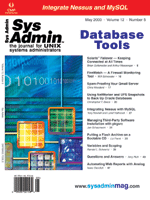
Building a Reporting SystemIf you are going to use logs for reporting, meet with the site's developers and business managers to ensure that logs contain a consistent record of the data needed. Building reporting systems is often an iterative process where adding features, functionality, and management procedures are done in cycles. The approach I employed had the following general steps:
1. Meet with business users and prioritize what traffic metrics and reports are needed. 2. Make decisions on what technical metrics should be recorded and analyzed. 3. Have Web developers and programmers document the site's navigation, API's, and the underlying default values in processing a page request. 4. Develop a server audit plan. Make sure that servers are logging in a consistent format and that logs are archived in a central area. Follow that up with monitors and alerts that ensure that all logging and log-management processes are operating correctly. 5. Develop a project plan that addresses issues and releases features in reasonable development cycles. 6. Address server and logging issues first so that you have an accurate set of logs as quickly as possible. 7. Understand your storage needs for archiving logs and develop the procedures for rotating, centralizing, and archiving. 8. Choose tools for parsing the logs and building reports. Understand the tradeoffs in time and cost in supporting commercial tools versus other solutions. 9. Keep the initial configuration simple and deliver simple reports. 10. Audit the metrics delivered by your reporting solution. This can be done by creating a small set of logs, running them through your procedures, and comparing metrics delivered by your solution with raw counts of the entries.
|